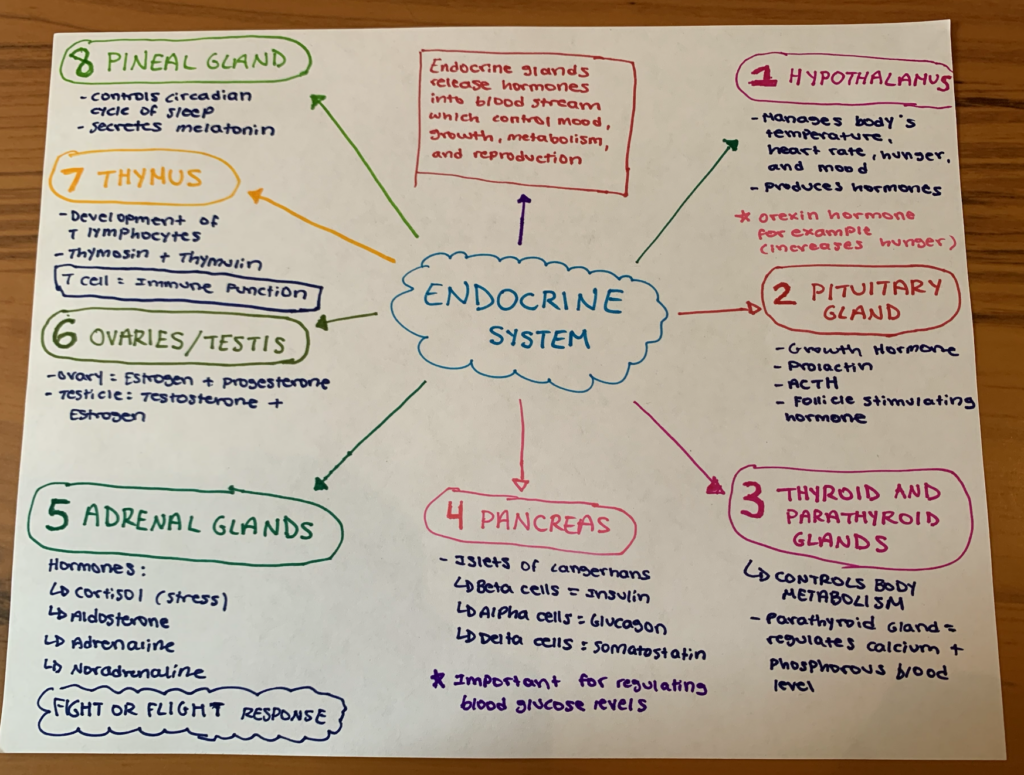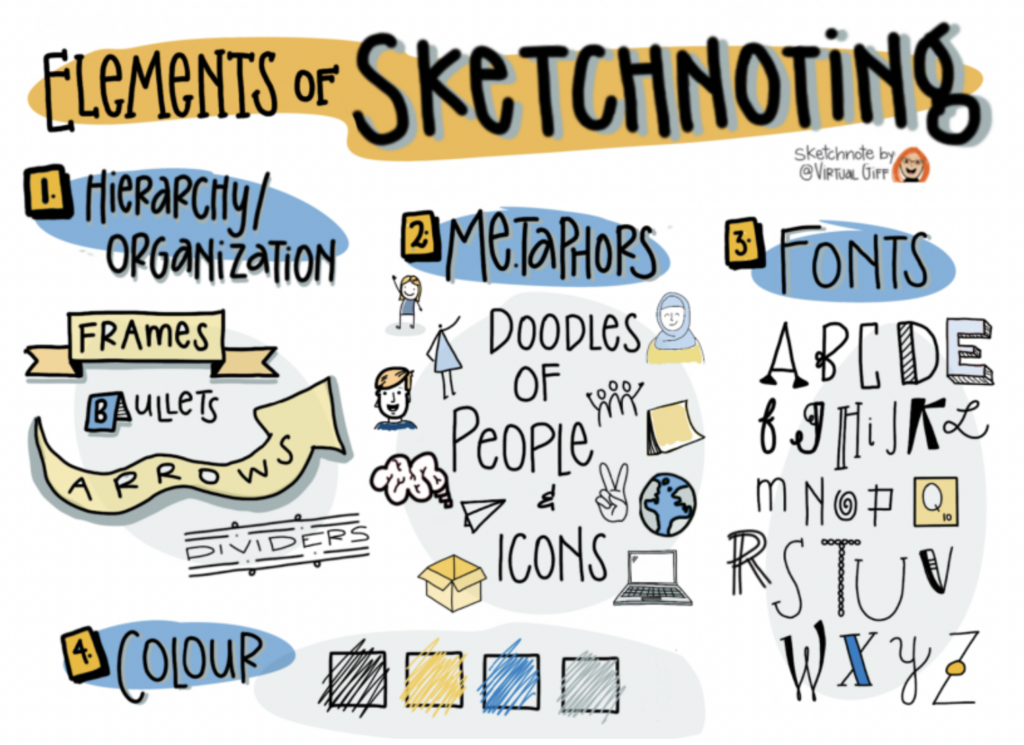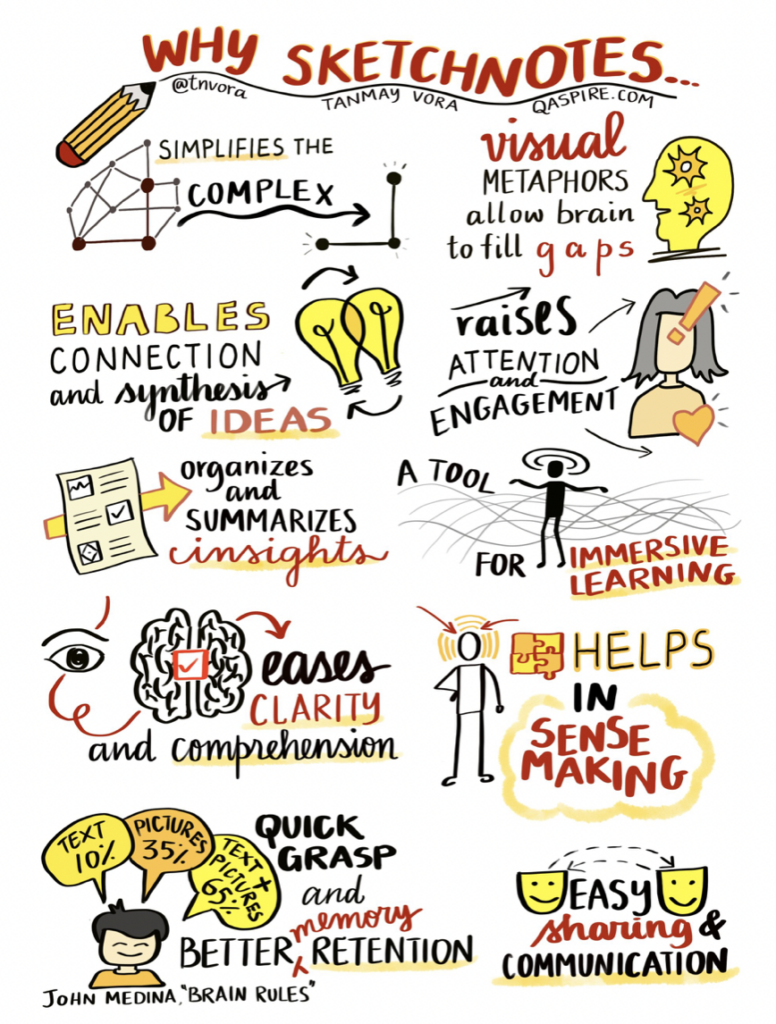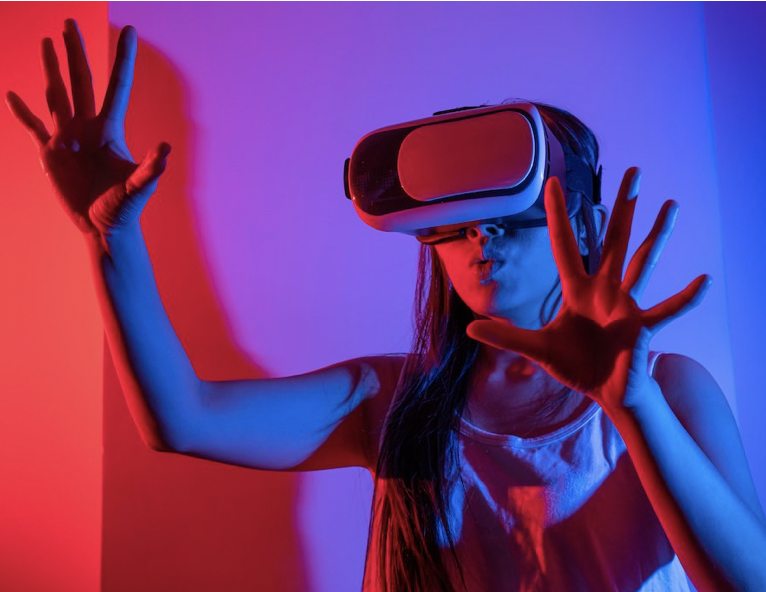My Experience with Sketchnoting
This week I tried out sketchnoting for one of my biology lectures while we talked about an overview of the endocrine system and the various key hormones that different endocrine glands secrete. While listening to the lecture, I focussed my attention on the most important concepts and ideas as well as key words.
The difficulty I experienced while sketchnoting was that because my professor spoke quite fast, I found it difficult to keep up with the speed of the lecture as I sketched and wrote down important concepts simultaneously. As a result, I believe I may have missed some information from the lecture simply because I was sketchnoting at a much slower rate than the presentation itself. However, I found this technique to be very beneficial for my concentration. I normally get distracted with my thoughts during lectures and tend to think about other things, but sketchnoting was really great at helping me to focus on the task at hand.

Mayer’s Principles and Intrinsic Load
The segmenting principle (categorizing/chunking concepts), modality principle (graphics and narration instead of graphics or narration), and pretraining principle (overview first, details later) are three of Mayer’s principles useful for managing intrinsic load. While creating my scetchnote, I found it very useful to categorize the various endocrine glands into different sections. For pretraining, I found Doug Neil’s tutorial on how to sketchnote without drawing very informative and I watched this tutorial before creating my own scetchnote in class. However, I had trouble incorporating the modality principle into my sketchnote. I believe it would be beneficial to upload a less text-heavy sketchnote onto Microsoft PowerPoint and use the audio feature to record an explanation of the content. I will keep this principle in mind as I continue to make more sketchnotes in the future!
Sketchnote Images for Inspiration





Recent Comments